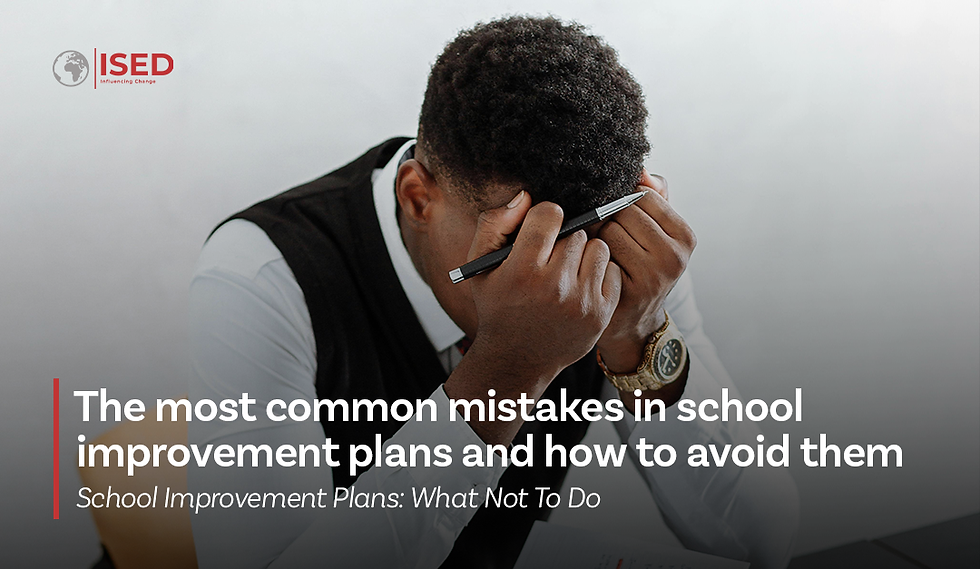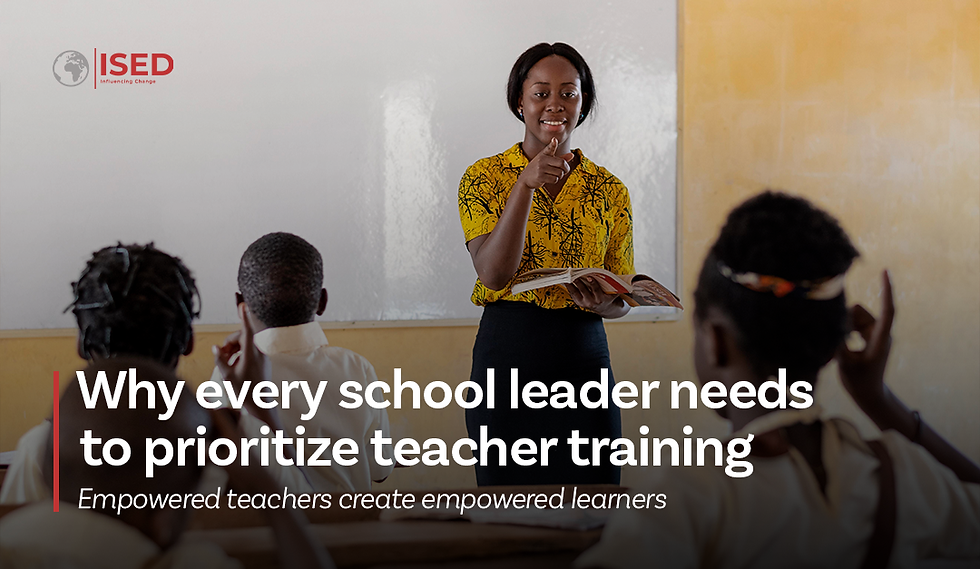Bridging the gap; Why Special needs in Education must evolve now
- Oluwabamise Ojuko
- Apr 15
- 3 min read
Mr. George, a new teacher, walked into a crowded classroom where one of the pupils, Ahmad, was always labelled “slow.” He hardly spoke, struggled with writing coherently and often stared into space. Previous teachers had mentally shut him out of the classroom and did not bother including him in class activities. But with patience and observation, Mr. George realised he was autistic. Not slow. Not stubborn. Just different.
Ahmad’s story is not unique. Across African classrooms, thousands of children with special educational needs (SEN) are being left behind – not because they lack potential, but because the system was never designed with them in mind.
The Invisible Gap
In 2021, UNESCO reported that children with disabilities in sub-Saharan Africa are 10 times less likely to attend school compared to their peers without disabilities. Those who do make it into school encounter poorly trained teachers, inaccessible materials, and classroom environments that ignore their individual learning needs. (UNESCO GEM Report, 2021)
We don’t talk about this enough. Special needs education in Africa is often treated as a luxury but inclusive education is not for the privileged or for charity. It is a right. It’s the difference between a life of possibilities and a lifetime of exclusion.
As educators, policymakers, school leaders, and edtech innovators, we need to ask: “What kind of education system are we building if it does not serve all learners?”
Inclusive Education: Urgent not Optional
The COVID-19 pandemic exposed the existing inequalities in our systems. A 2020 report by Human Rights Watch revealed how children with disabilities were disproportionately affected during school closures, with little or no access to remote learning.
Although countries like Kenya, South Africa and Ghana have taken steps toward inclusive policies and curriculum adaptation, policy development and implementation remains painfully slow across Sub-saharan Africa, especially in rural and low-income communities.
On the flip side, the education sector has witnessed a boom in digital learning tools post-COVID-19 but many of these solutions are still not inclusive by design.
If we truly are striving towards equity in education, we must move beyond performative inclusion. We must intentionally design learner-centered, accessible, and inclusive learning environments that cater to neurodiverse learners and those with physical disabilities.
What Needs to Change?
Teachers, school leaders, and policymakers are the ones standing in the gap. If we don’t shift, the gap widens.
Teacher Training: Every teacher, not just special educators, should be equipped to identify and support diverse learners. Pre-service and in-service teacher training programs must integrate special education pedagogy, with practical tools for differentiated instruction and learner support. Educators must be equipped, otherwise they become overwhelmed.
Policy and Practice: African governments must go beyond inclusive education policies to budgeting, monitoring, and training that reaches both rural and urban communities. Driving collaboration between ministries of education, NGOs, and the private sector is a good starting point.
Community Education: In many communities, people still see disability as a source of shame or caused by spiritual misfortune. We must change this narrative through grassroots advocacy, parent training, and consistent public education.
Technology for Inclusion: Startups and EdTech companies must intentionally design products with assistive technologies like text-to-speech apps and visual learning tools. These products can be game-changers, if we prioritize access and training.
Inclusive education is not just a fancy term. It is foundational to achieving Sustainable Development Goal 4: Quality Education for All.
Let’s not forget: every child has a voice, a gift, a future. And when we design for diversity, we create learning spaces where everyone thrives.
We cannot postpone inclusion. The time to evolve is not someday — it’s today.






Comments